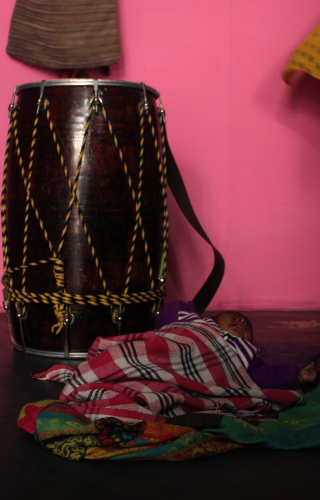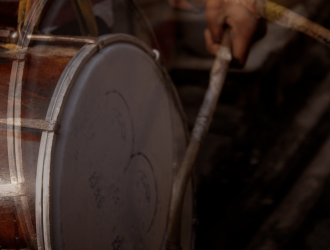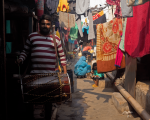Kathputli Colony accommodates more than 12 tribes of artists practising different art forms, which is why calling the settlement Kathputli, after the kathputhliwalas (puppeteers), could be a little misleading.
For over five decades, the colony has housed, among other performers, puppeteers, magicians, stilt walkers, musicians, masqueraders, acrobats, woodworkers and dancers. Their arts have been an important part of the Indian cultural space for centuries. As impromptu majma (crowd) on the streets, as part of traditional celebrations and even as protests, around India, these art forms have had a distinct role in shaping the nation’s cultural identity.
However, we tend to forget that art forms are as much about performances and artists as they are about the objects that constitute them. What is kathputli as art without a stringed puppet with a particular mechanism, size and colour, which influence the way puppetry is performed and consumed?
In 2014, Kathputli Colony was razed to the ground and its inhabitants were temporarily moved to a makeshift transit camp in Anand Parbat (West Delhi). The colony was supposed to be rebuilt and handed over by 2018; however, in 2020, the artists are still fighting for their homes. This photoessay focusses on the dislocated artists living in the transit camp.
These images cover puppetry, stilt walking, dhol playing, fire breathing, juggling and street magic, and attempt to bring into focus the objects of performance associated with various street art forms. If, as viewers, we can understand how heavy a dhol is or how big a puppet is or how long a stilt walker’s pants are, we may be able to imagine what it must be like to make these objects, purchase them, and store, carry and perform with them. We might, for a moment, come closer to the realities of the performers. This may help us better understand the lives of the artists and their arts. The aim is also to introduce you, the reader, to the various artists that have been featured.

















